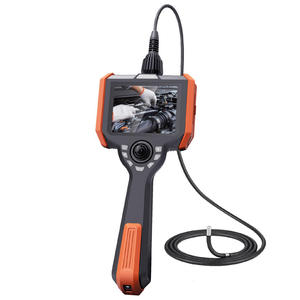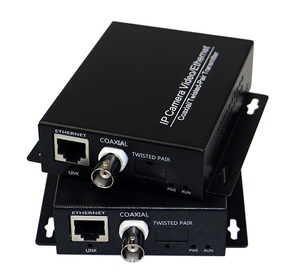Top Advantages of Installing a Fiber Optic Security Camera for Your Business
Top Advantages of Installing a Fiber Optic Security Camera for Your Business
Blog Article
How CCTV Cameras With Fiber Optic Result Boost Long-Distance Surveillance
CCTV video cameras geared up with fiber optic output stand for a considerable development in long-distance surveillance modern technology, using unparalleled benefits over conventional systems. By leveraging the properties of light transmission via fiber optics, these cams make sure high-definition video high quality stays undamaged throughout extensive ranges while properly mitigating electro-magnetic interference - cctv fibre optic cable.

Understanding Fiber Optic Modern Technology
Fiber optic innovation is significantly utilized in long-distance surveillance applications as a result of its outstanding capability for data transmission. This innovation employs thin strands of glass or plastic fibers to transfer data as light signals, considerably lowering the depletion frequently associated with standard copper wires. The intrinsic properties of optical fiber allow for the transmission of big quantities of information over significant distances without loss of top quality, making it an optimal selection for applications needing trusted communication.
The principle of total internal representation helps with the effective transmission of light within the fiber, making sure high transmission capacity and rate. Unlike electric signals in steel cables, fiber optics are immune to electro-magnetic disturbance, improving the integrity of information transmission. This characteristic is specifically important in environments with high degrees of electric noise, such as commercial setups or city locations.
In addition, fiber optic cords are lighter and more adaptable than their copper equivalents, which simplifies setup and decreases architectural load. With their sturdiness and resistance to ecological factors, fiber optics are appropriate for outside applications, thus expanding the reach of keeping track of systems. Therefore, fiber optic technology is ending up being a keystone in modern-day security remedies, properly dealing with the difficulties of long-distance monitoring.
Advantages of Fiber Optic CCTV
Making use of fiber optic innovation in CCTV systems provides many benefits that enhance surveillance capabilities. Among the main advantages is the capacity to send high-definition video clip over cross countries without considerable signal degradation. Unlike standard copper cords, optical fiber can preserve video top quality over considerable runs, making them suitable for big residential or commercial properties or remote surveillance locations.
Additionally, fiber optic cable televisions are less vulnerable to electromagnetic disturbance, which can distort signals in standard systems. This makes certain clearer pictures and undisturbed solution, crucial for security surveillance. In addition, fiber optics are inherently a lot more protected, as obstructing signals needs specific equipment, therefore giving an added layer of defense against unapproved gain access to.
The light-weight and small nature of fiber optic cords likewise streamlines installment, making it possible for less complicated directing through limited rooms and reducing general labor costs. Their durability makes them immune to environmental variables such as dampness and temperature variations, extending the life expectancy of the surveillance system.
Last but not least, fiber optic systems can support a majority of electronic cameras on a solitary network, enhancing sources and offering scalability for future growth. These benefits make fiber optic CCTV i thought about this systems a remarkable selection for contemporary monitoring demands.
Contrast With Standard Equipments
When comparing CCTV systems, conventional setups commonly fall brief in several key areas, particularly in regards to range and signal stability. Traditional coaxial cable television systems normally deal with significant signal destruction over cross countries, restricting effective surveillance ranges to around 300 feet (cctv fibre optic cable). Yet check my blog limit, picture clarity reduces, leading to prospective blind areas and decreased monitoring performance
In contrast, fiber optic systems maintain signal honesty over much higher distances, typically going beyond numerous miles without loss of quality. This is greatly as a result of their capability to transfer data as light signals, which are much less at risk to electro-magnetic disturbance than electric signals made use of in standard systems.
Additionally, conventional systems call for much more substantial maintenance and troubleshooting as a result of their vulnerability to environmental aspects such as dampness and electromagnetic sound. Fiber optic systems, on the other hand, deal boosted sturdiness and lower upkeep prices, as they are much less susceptible to damage.
Applications in Long-Distance Surveillance
The advantages of contemporary CCTV systems in preserving signal honesty over long ranges open a wide variety of applications for long-distance tracking. One significant application remains in urban monitoring, where municipalities release fiber optic CCTV systems to keep an eye on public spaces, enhancing safety and security and hindering criminal task. These systems supply constant, high-quality video clip feeds that are critical for efficient legislation enforcement and emergency situation response.
One more important application remains in commercial settings, where remote monitoring of producing processes and unsafe locations is essential. Fiber optic CCTV can stand up to rough atmospheres and send information over long ranges without loss of high quality, permitting real-time oversight and reducing dangers to workers.
In addition, critical framework such as flight terminals, trains, and pipes take advantage of long-distance CCTV surveillance. Protection teams can look after big locations from systematized control rooms, making sure rapid feedback to any events.
In addition, in farming settings, farmers utilize long-distance CCTV to monitor plants and animals, helping to boost productivity and protection. Overall, the flexibility and dependability of fiber optic CCTV systems make them crucial throughout numerous markets, making it possible for thorough surveillance services tailored to specific demands.
Future Patterns in Monitoring Technology
Just how will innovations in innovation improve the landscape of monitoring? The future of security modern technology is redirected here positioned for substantial change, driven by innovations such as fabricated knowledge (AI), artificial intelligence, and side computer. These modern technologies enable real-time information analysis, enabling fast identification of potential threats and boosted situational understanding.
AI-powered analytics will boost the accuracy of facial recognition systems, minimizing incorrect positives and making it possible for a lot more reliable tracking of people. The integration of Web of Things (IoT) gadgets will promote a smooth network of interconnected monitoring systems, improving tracking capabilities throughout large locations.
An additional pattern is the change in the direction of cloud-based storage space solutions, which supply scalable information management and availability. This will certainly enable companies to store substantial amounts of video clip information without the limitations of physical storage space, while ensuring that info is easily retrievable.

Conclusion
In final thought, CCTV cameras geared up with fiber optic result represent a considerable advancement in long-distance surveillance capacities. As surveillance innovation continues to evolve, the adoption of fiber optic solutions will likely play an essential role in boosting protection throughout diverse applications.
Report this page